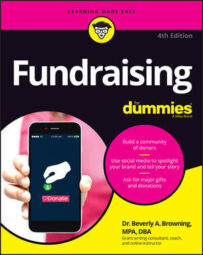Here are some tips to keep in mind as you write your first draft:
-
Make it clear. Be concise and focused in your mission statement, goals, objectives, and program information.
-
Make it urgent. Give your reader a reason to care about your cause today.
-
Make it complete. Address the five Ws — who, what, when, where, and why — and include them in your case statement.
-
Make it interesting. Tell stories. Both success stories and heart-tugging stories stir the emotions of your readers.
-
Paint images in your readers’ minds. Visual words and action words activate your readers’ imaginations and help them remember your mission.
-
Don’t overdo it. Tugging on heartstrings requires an even hand. Resist gushing.
-
Do your homework. Make sure your facts — financials, program design, staff info, and plans — are accurate and well researched.
-
Include a call to action. Give your readers a clear way to help.
-
Reread, revisit, and revise. Write your best draft, take two aspirin, and ask for reviews — from past donors, volunteers, staff, and your board. Figuring out what others think of the case statement helps you communicate more clearly and compellingly, which, in turn, helps your case statement hit its mark.

